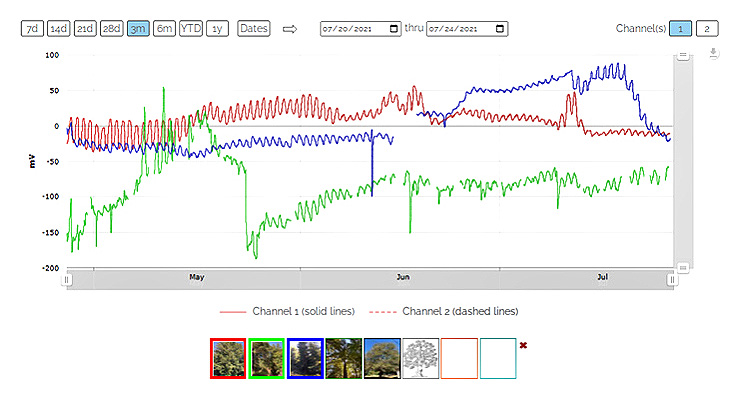
Giving a Voice to Trees
There’s something about being with trees – a walk in the forest, the experience of planting a tree or leaning back against a tree with a book in hand. Are trees sentient beings? Can they sense how humans feel about them? Are they affected by our emotions? And, what is it about trees that has an uplifting effect on people?
Trees Are Intelligent
A new generation of scientists is showing that plants and trees are intelligent and aware; they process information, sleep, remember, and communicate with one another. They have at least 20 different types of senses, including ones that roughly correspond to our five senses. They also have additional senses that can do things such as measure humidity, detect gravity, vibrations, and sense electromagnetic fields. These scientists insist that plants and trees are intelligent because they can sense, learn, remember and even react in ways similar to humans. Their behaviors exhibit a coordinated activity and response across the whole organism that require signaling and communication systems which include long-distance electrical signals, specialized vascular tissues, and the production of chemicals used by the brain and nervous systems in humans and animals. The most well-known way they communicate is chemically. This is why some plants and trees smell so good and others awful.
Researchers have also tracked the exchange of nutrients and chemical signals between trees through an invisible underground fungal network. The oldest trees, or "mother trees," function as hubs and help nourish their offspring until they’re tall enough to reach the light. In other words, trees recognize their seedlings as kin. Trees also cooperate by trading nutrients across species. For example, when evergreen species have sugars to spare, they share them with deciduous species when they need them and vice versa. For the forest community, this cooperative and coordinated underground economy provides better overall health, more total photosynthesis, and greater resilience in the face of disturbance that allows them to thrive collectively.
Electrical Life of Trees
Although there has been an abundance of new research and insights on the way trees communicate through chemical processes, there is far less known about the electrical life of trees.
A professor at Yale University was the first person to conduct long-term measures of trees’ electrical activity which appeared to be related to the phase of the moon and solar cycles. There’s a lot more to learn about trees, especially how they may respond to human emotions and how being in the presence of their biofields can have an uplifting effect on people. The HeartMath Institute (HMI), a non-profit research and education organization, has developed a new technology that reads the electrical signals in trees and the surrounding earth and then feeds those signals to the cloud, where they are processed and displayed on a computer screen. Interestingly, trees have complex and different overall electrical patterns, almost as if each tree has its own personality.
Graph of Live Tree Data

Global Tree Monitoring Project
This Global Tree Monitoring project is part of a broader initiative to conduct interconnectivity research, ¬testing the hypothesis that all life forms are interconnected in a rich tapestry of intersecting magnetic energy fields. We aim to reveal this ancient hypothesis under the lens of modern science. HMI has created new equipment and software for simultaneously measuring the electrical potentials generated from trees located around the planet. This is an exciting citizen scientist project that encourages people from around the world to sponsor and host a sensor on their favorite tree. We will use the data from the global tree network to explore research questions such as: Are trees affected by human emotions? Do the electrical responses in multiple trees correlate to events that trigger an emotional outpouring in large numbers of people? Can trees help predict earthquakes? Do trees communicate energetically with each other over large distances, and how does the biofield of trees have an uplifting effect on people?
HMI’s Tree Research Benefits People By:
- Providing a deeper understanding of how people and trees are energetically connected.
- Gathering information about how trees respond to human emotions generally and how they respond to positive human emotions in particular.
- Collecting data before earthquakes to aid in prediction – and saving lives.
- Establishing a network of tree-monitoring sites and a website with live data from a redwood grove that allows public interaction with the trees at any time.
The HeartMath Institute Tree Rhythms – A Citizen-Scientist Project
Learn how you can participate or view a real-time live data graph of 46+ trees to see the electrical activity from any tree in the network.
Please feel free to share HeartMath Trees Rhythms – A Citizen Science Project with anyone who would be interested.
We would love to hear from you!
Please share with us your thoughts, feelings or experiences with trees in the comments below.

